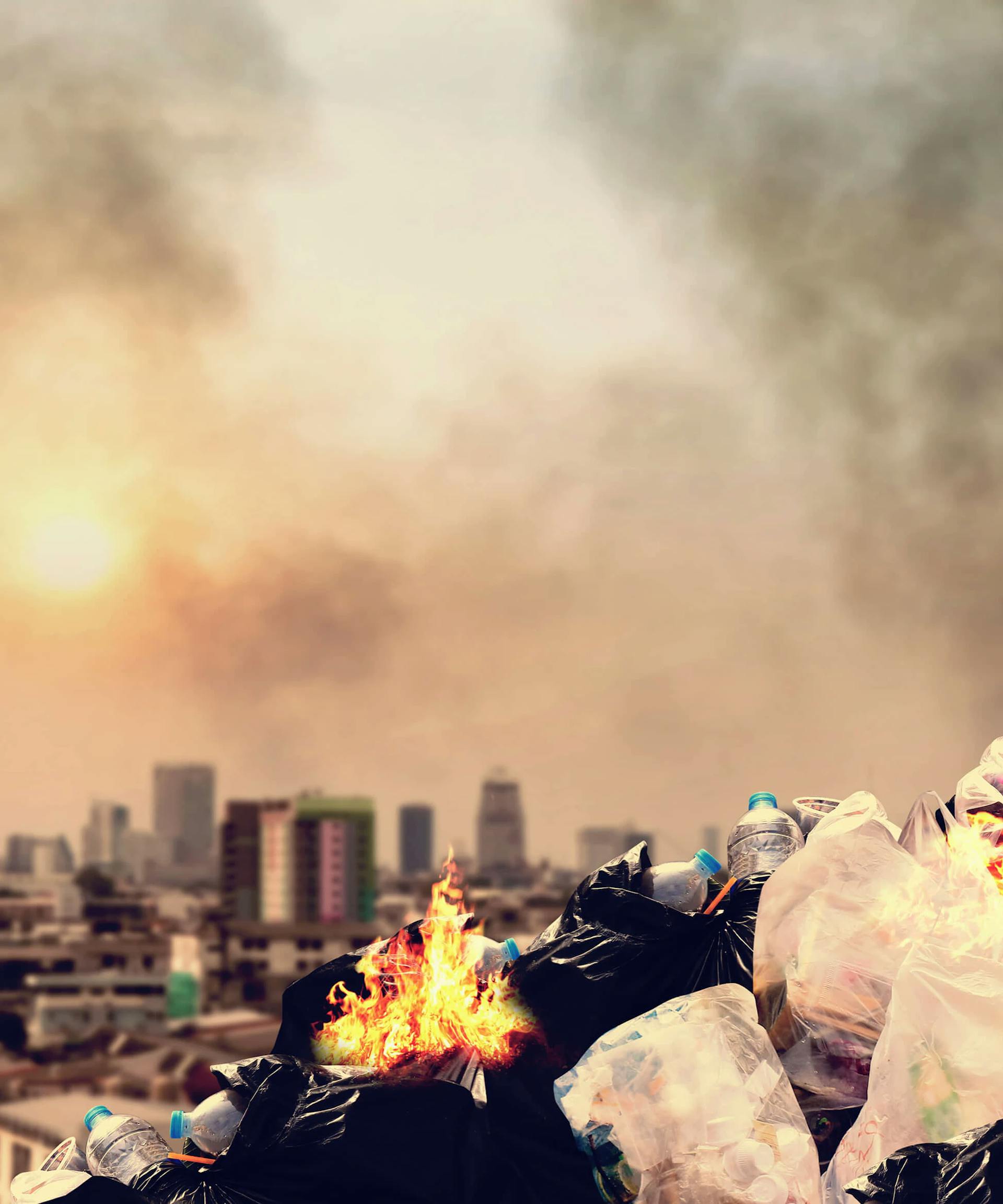Recycling Plastic Is A Huge Lie
Like most Americans, I try to cut back on my plastic use and always recycle. I’ve always figured it was the least I could do, but a recent PBS documentary reveals some disturbing facts about recycling.

The recent PBS documentary Plastic Wars exposes the history of recycling, and the motives behind recycling programs aren’t as altruistic as we've been led to believe. This is the ugly truth behind what’s happening to the majority of the plastic that we do recycle.
A Brief History of Plastic and Recycling
With the post-war economic boom of the second half of the 1940s, the plastic boom came with it. Plastic had been used before, but never on such a large scale. The expansion of the plastic industry led to overflowing landfills, and the importance of recycling was a large part of the green movement that began with the first Earth Day in 1970. In the mid-seventies, communities began offering the curbside recycling program that we see today, and the programs grew through the ‘80s. This made recycling convenient for everyone, except for the plastic companies and their wallets.
Less than 10% of plastic waste is recycled.
Plastic companies began labeling many plastics as 100% recyclable, making the solution to overflowing landfills look easy. Unfortunately, this was a lie that the plastic industry used to boost sales — and it worked.
The Ugly Truth
The mantra is “reduce, reuse, recycle,” but we seem to be mainly focused on recycling. Many Americans buy plastic products with the confidence that they’re all recyclable, but less than 10% of plastic waste is recycled. Some plastics, like the plastics found in bottles and jugs, are easily recyclable, but plastics like baggies and wrappers are more difficult to recycle and aren’t economically feasible.
Industry experts aren’t afraid to acknowledge the lack of communication between the plastic companies and their consumers. Coy Smith, former board member of the National Recycling Coalition, says, "Our own customers...they would flat out say, 'It says it's recyclable right on it’, and I'd be like, 'I can tell you, I can't give this away. There's no one that would even take it if I paid them to take it’."
Former plastic executive Larry Thomas believes the disconnect between the producers and consumers was key to the industry’s success in pushing recycling. He said, "The feeling was the plastics industry was under fire, we got to do what it takes to take the heat off, because we want to continue to make plastic products. If the public thinks that recycling is working, then they're not going to be as concerned about the environment."
If the public thinks recycling is working, then they're not going to be as concerned about the environment.
The goal of the recycling movement was never to help the environment, as former executive Lewis Freeman says, "There was never an enthusiastic belief that recycling was ultimately going to work in a significant way."
In fact, Americans were better at recycling in the 1800s. Susan Strasser, author of Waste and Want: The Social History of Trash, says, “People recycled far more than we do now. Before there was municipal solid waste disposal, stuff would pile up in your house if you didn’t reuse it. In addition, people who made things had an understanding of the value of material goods that we don’t have at all. Literally, if everything you wore, sat on, or used in your house was something you made or your mother or uncle or the guy down the street made, you had a very different sense of value of material goods.”
The rise in recycling ads only makes the problem worse. These ads convince the consumer that it’s their responsibility to recycle to save the planet. In truth, the average person can only reduce their use of plastic to help solve the problem. The majority of the responsibility lies with the plastic companies.
Don’t worry, it gets worse. The plastic industry is showing no signs of stopping, as plastic production is expected to triple by 2050.
Where Does the Plastic Go?
The majority of plastic waste ends up in landfills and in the ocean. But the worst fate is the plastic that is shipped overseas. We sell our plastic waste to third world countries to get sorted, but these foreign companies are rarely successful, instead harming the environment and making their people sick. In Plastic Wars, Indonesian environmental activist Yuyan Ismawati said, "We are struggling to clean up the modern debris and modern litter in Indonesia, the additional burden of waste from overseas — I don't know how we are going to handle it. Americans need to know that your waste ended up here."
These countries, with no facilities to recycle or even condense plastic for storage in a landfill, often resort to burning the plastic to eliminate it. These aren't the industrial burners that countries like Japan use to dispose of their plastic waste. The burn piles in these undeveloped countries throw toxic smoke into the air, pollute rivers with dangerous pollutants, and create dangerous working conditions for the people unfortunate enough to work with first world garbage.
Closing Thoughts
For now, the best way to dispose of your plastic waste is in the landfill. You can also work to reduce your plastic footprint by buying products that use more renewable packaging like paper or fabric. In the scheme of environmental problems, plastics really don't need to be our number one concern. So next time you've got a soda bottle, throw it in the trash where it belongs.